- What is Generative Engine Optimization (GEO) and the 9 Ways to Do It - March 26, 2025
- 12 Best Product Tours Software - November 18, 2024
- 24+ Best Webinar Software Platforms For Every Business in 2025 (Ranked & Reviewed) - October 19, 2024
A comprehensive podcast advertising guide by Growth Marketing Pro Hailey Friedman.
In today’s ever-changing digital landscape, us savvy growth marketers have to be nimble and adaptable. Quickly embedding the latest technologies into our toolkit– fully devoted to following our audience wherever they may lead us.
If you’re like me, and you’re on the hunt to nail down an educated, tech-savvy, high net worth audience, then you too have probably found yourself here, at the doorstep of the world that is podcast advertising.
From the highly acclaimed “Serial“, to the wildly popular “Startup“, to ever-inspiring “How I Built This“, there’s a little something for everyone. And our target audience is tuned in. They’re tuned in from their cars, on the subway, at the gym and on their walks to work.
They’re listening to everything from inspiring stories, to political debates, to standup comedy, to how-to’s and they’re feeding their brains with new knowledge with every episode consumed.
Where do we fit in? How can we educate this podcast-listening audience about our company while seamlessly integrating with this audible medium? Well, that’s what I’m about to lay out, step-by-step, in this comprehensive guide to podcast advertising.
Here’s an overview of what I will be covering. Feel free to jump around by clicking on the links below:
First off, what’s a podcast?
You probably already know what a podcast is, but let’s make sure we’re all on the same page- just to be safe. A podcast is an on-demand audio show. You can subscribe to listen to your favorite shows and download episodes for free from the convenience of your smartphone.
It can be a similar experience to listening to a radio talk show or to an audio book depending on what type of podcasts you like to listen to- sports, science, investing, entrepreneurship, comedy, the spectrum is practically endless.
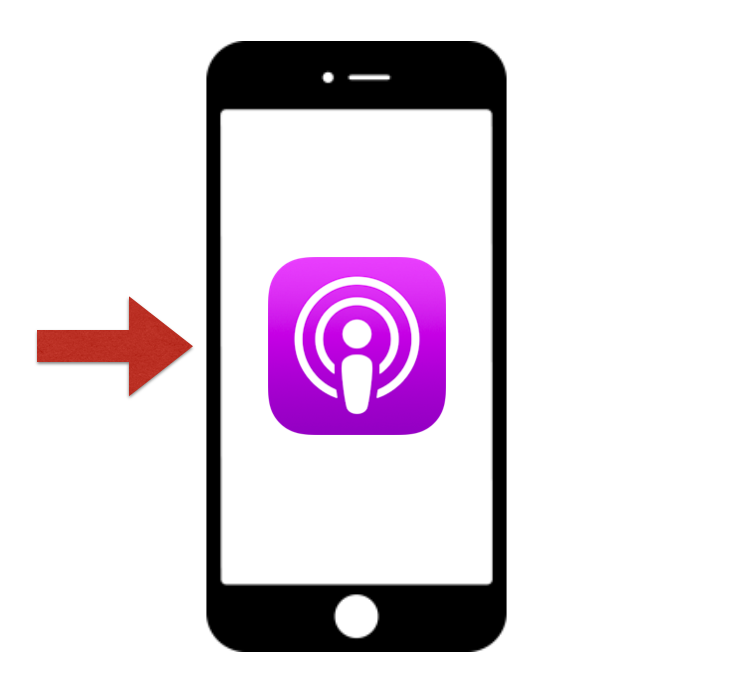
Table of Contents
Why would I try podcast advertising?
Podcast advertising is a great way to reach a highly engaged, highly educated, and high income audience – so if this sounds like your target audience, I suggest reading further.
I would put podcasts into the category of “relationship marketing” because podcasts are “friendly traffic”.
Why is it friendly? Podcasts with a loyal following, have listeners who tune in to every episode of their podcast, often times the day it is released. These listeners have established trust with the podcast, the host and the topics they cover. It’s almost as if the podcast host starts to feel like a friend.

Therefore, when a podcast host speaks about a company or a product and can recommend it to their readers in a truly genuine way, that podcast host is sending a “warm lead” to your site.
This is someone who’s already been primed. They’re a pre-qualified lead because they’re already learned about your company directly from someone they consider a friend or a trustworthy source.
This person was SO interested in your company, that they actually went into their web browser, typed in the name of your company, or even your specific vanity URL into their web browser!!! Now that is a high intent lead.
As a result, a podcast lead is similar in quality to the type of lead you’d get from a referral program or an affiliate program.
To give you an idea of how strong podcast leads are, here’s a snapshot of my Google Analytics page showing that podcast leads signup at a conversion rate that is up to 7X the average site visitor.
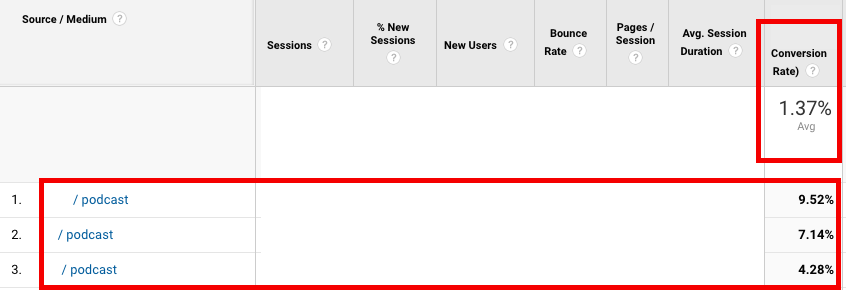
Fairly early on in my tenure at RealtyShares, I tried managing a podcast campaign, and failed pretty miserably.
Why? Because I wasn’t prepared for all the moving pieces.
There’s a lot more to podcast advertising than meets the eye and I’m going to lay it all out for you right here, so you don’t have to learn it all the hard way.
Can you afford to be on podcasts?
This is an important question to ask yourself early on.
Properly testing podcasts ads as a channel can be quite expensive.
Every podcast has a very different audience. In order for podcasts to work for you, the audience has to be the right match for your product. And in order to find that fit, you’ll have to run ad tests on a bunch of different podcasts.
For example, if you just run ads on one podcast, and it doesn’t work, that doesn’t mean that podcast ads won’t work for you, it just means you need to find the right show with the right audience.
However, testing multiple podcasts at once can add up quickly.
If you have an allocated budget of $50k+ to work with, keep reading about podcast advertising.
If not, you might want to consider going on a “podcast tour” and landing free spots on podcasts by being a guest speaker. Learn more about Podcast Tours here.
Podcast advertising- the basics
When you buy a podcast ad, you’re buying a time slot, usually somewhere from 30 seconds to 1 minute and 30 seconds, during which the host will talk about your company or product.
You can browse through podcasts to advertise on using PodBean which is a marketplace that connects advertisers and podcast hosts.
You’ll want to know whether you are buying a “live read” or a “recorded read”. The two are very different:
- In a live read, the host is integrating your product into the current episode in an authentic way, and maybe even improvising on the spot.
- In a recorded read, the host pre-recorded an audio commercial about your product that will be played during a specific time slot in the podcast episode.
Pro tip: A live read is the most valuable type because it comes off more authentically to listeners.
The more genuinely the host speaks about your product, the more likely listeners will be to take action.
The placement of the time slot you are buying also matters. There are three different types of time slots you can buy:
- Pre-roll: usually 15 – 30 seconds at the beginning of the podcast
- Mid-roll: usually 1 – 1.5 minutes towards the middle of the podcast
- Post-roll: usually 15 – 30 seconds at the end of the podcast
Pro tip: The most valuable spot for a podcast ad is the mid-roll because that is when listeners are most engaged with the content and are least likely to skip through your ad.
Pre-roll spots are second best as the podcast is just beginning, while post-rolls are probably the least valuable because a listener will likely end the podcast before listening to the ad at the very end.
Podcast hosts are aware that live reads and mid-rolls are highly coveted, and they usually price their rate cards with this in mind.
Want to know exactly what to say in your podcast ad? Download my script for the perfect podcast ad.
What does podcast advertising cost?
Pricing for podcasts can vary significantly depending on a show’s popularity. Like I said, you can browse through podcasts to advertise on using PodBean which is a marketplace that connects advertisers and podcast hosts. A show’s popularity can be measured by the number of subscribers a show has or number of downloads an episode receives.
In the podcast world, the metrics can get a little convoluted.
For example, a podcast can have 10,000 subscribers, but it’s possible that only 3,000 ever listen to more than one episode of that show. When buying your podcast ad, try and dig into the numbers a bit and make sure you really understand the metrics being quoted to you.

Podcast advertisements are typically priced on a CPM (cost per thousand) model, based on the number of downloads an episode receives. Rates can range from a $18 to $50 CPM, and the highest performing shows can cost even more.
In other words, buying podcast advertising can range from $200 per episode to $25,000 for a one episode spot.
Looking for a cost-effective alternative? Go on a Podcast Tour!
A more affordable way to get your name out there on podcasts is to be a guest speaker for podcast interviews.
Not only is it free to be a guest on a podcast, but you also get way more airtime with the podcast listeners than you would if you were paying for an ad.
Sound too good to be true? Think it’s difficult to land podcast interviews? That’s where you’re wrong.
In fact, I recently hired a podcast booking service — an expert team dedicated to send me on a “Podcast Tour”.
For a fraction of the cost of podcast ads, they booked me for 3-5 podcast interviews every month without me lifting a finger. They organized everything, from creating pitch emails and materials, managing the calendar scheduling, to creating detailed notes about the show and host for me to review before each interview.
It does take a few months between recording the podcast interview and having it go live, but so far I am very impressed with their services.
Want a personal introduction to the team I hired? Send me an email at [email protected] and I will make an intro.
Podcast tour not sounding exactly right either? Another great, lower-cost option to engage with high-quality leads for your business is to host a webinar. Webinars are an incredible way to speak directly to your audience and create a long-lasting source of low-effort revenue. You can check out my guide to choosing the best webinar software here.
What’s the right cadence / frequency for podcast advertising?
After two failed attempts at podcast campaigns, I asked for advice from a colleague and friend of mine, Ilyas Frenkel who is the Director of Growth at Wunder Capital. His experience with podcast advertising was cultivated at his two year tenure managing Growth at Squarespace. If you’ve ever listened to a podcast, then you know that Squarespace is the king of podcast advertising.
Here’s what Ilyas told me about the right cadence / frequency for podcast advertising- He said once you define which shows you want to test, run a test campaign across these shows for 8-12 weeks, peppering the audience at a high frequency with 7-9 ad spots within that time frame. So, about once a week per show within this test period.
At the completion of this test, you should be able to see which shows performed best. You can then continue to run the best performing shows, but at a lighter frequency over a longer stretch of time and that tends to work really well.
If you can’t afford an 8-12 week test, you can achieve directional results in a test as short as 3-4 weeks long with episodes being dropped once per week.
The perfect podcast script
When it comes to the live podcast read, getting your messaging right is critical.
While the whole idea behind a live read is that it’s “live”- you’ll still want to create a scripted guide to make sure the host is representing your product and hitting the key value propositions you want mentioned.
The perfect podcast ad script contains the following key components:
- The intro – this is often a personal story from the host that acts as a segue into the concept of your product. Or it can also be a statistic that creates context around the product.
- Talking points– these are the key value propositions around your product or company that you want to make sure the host mentions during his live read.
- Call to action– this is the most important part. This is where you tell the listeners what you want them to do, which is usually visit your website at yourwebsite.com/yourvanityURL. Make sure that the host reads your call to action at least 3 times at the end of the live read, literally spelling it out if necessary.
Are there other things you want the host to know or mention? Make sure to tell them. If you need to make certain sentences mandatory, do so. If they need to read any specific disclaimers aloud, make sure you make that clear from the get-go.
The secret to the best podcast reads
Meet the hosts.
Set up a kickoff call with the host of every show before your campaign goes live.
Like I said earlier, podcast hosts have created a rapport with their listeners. When a host recommends a product on their show, it’s a similar experience to having a close friend recommend a product to you.
In order for a host to speak with genuine enthusiasm about your product, they need to know what it is they’re talking about!
They need someone to sell them on the product first. Someone with thorough knowledge to explain it in detail and get them pumped about it.
That someone is you.
You must find the time, coordinate schedules, to get on the phone with the host and give them the elevator pitch. Make sure to allow time for them to ask questions. Get them amped up about your product!
Ideally, they should have first hand experience using your product. That means get them exploring your website. Provide them with a demo login if necessary. Send them a free sample. Whatever it takes so that the host has a full understanding of your company and can recommend it with abounding enthusiasm.
Pro tip: the more enthusiastic the host is about your product, the better they’re going to be at selling it. If you get the feeling that the host isn’t thrilled with your product, or that they’re questioning the product/audience fit, you’re better off taking your business elsewhere. A mediocre live read isn’t going to convince anyone to visit your website. The power lies in the excitement of the host and their genuine interest in your product.
How do I measure ROI or the success of podcast advertising?
This part can be tricky. Since listeners are not clicking directly on a link to your company’s website, we have no paper trail or UTM cookie trail, to track how a podcast listener arrived at your site.
However, there are some work arounds that make it possible for you to measure the effectiveness of a podcast campaign in terms of ROI.
- Vanity URLs– you can create a unique URL just for a specific podcast and direct listeners to that URL within the podcast script. For example, you can tell listeners to visit www.yourwebsite.com/podcast. That way, you can track all visits and signups that came from that specific URL in Google Analytics.
- Promo Codes– you can mention a unique promo code just for a specific podcast and mention that promo code within the podcast script. For example, you can tell listeners to visit your site and use promo code PODCAST25 at checkout for a special offer. That way, you can track all purchases that utilized that promo code and attribute that back to the podcast.
- Surveys– you can ask users at the point of signup or afterwards via email “How did you hear about us?”. You likely won’t get a response from 100% of the people you survey, but you should be able to get about 30% to respond and this might be a great way to fill in the gaps for attribution you couldn’t get elsewhere.
No matter which method you choose, it’s important to stick with it and be consistent. Podcasts can be expensive and you want to make sure you can measure what’s working and what’s not.
Personally, I like using a combination of all 3 measurement tools. I use a vanity URL in the podcast script, sending users to a podcast-specific URL to access a special offer. On the landing page, users can access a promo code that can be used at the point of purchase. Additionally, at the point of signup, I use a survey asking the customer how they heard about us. This way, I have three opportunities to collect attribution data.
Quality Assurance- monitoring performance
Just because your live read happened, doesn’t mean it happened well.
It’s your responsibility to make sure that hosts are saying the things you want them to say, the way you want them to say it.
Did a host mis-pronounce the name of your company? Did they mis-state a statistic or forget a disclaimer that was mandatory? Ask for a make good!
Usually it’s written in your agreement that is there is a mistake in the live read, the podcast will offer a “make good”, which means they’ll throw in another spot for free in a future episode. This can be a great way to get additional exposure so make sure you’re listening to every read after it happens.
Did you hear a host do an incredible job? A read that sent an outstanding number of visitors to your site? Save it and share it with other hosts!
Let other shows know what works well so they can be a better partner and tailor their reads to target your audience. After all, they want advertising partners to keep buying their spots, so this experience should be mutually beneficial for everyone involved.
How to find the right podcasts
There are a couple of ways you can go about this.
First you can go to the podcast app on your phone and search a keyword that describes your niche. Browse through the relevant podcasts, pick ones that might be a fit and go to the website of the show and contact the host or ad manager directly. This is what I did the first time around. This is the most cost effective, but time consuming way of managing your podcast buy.
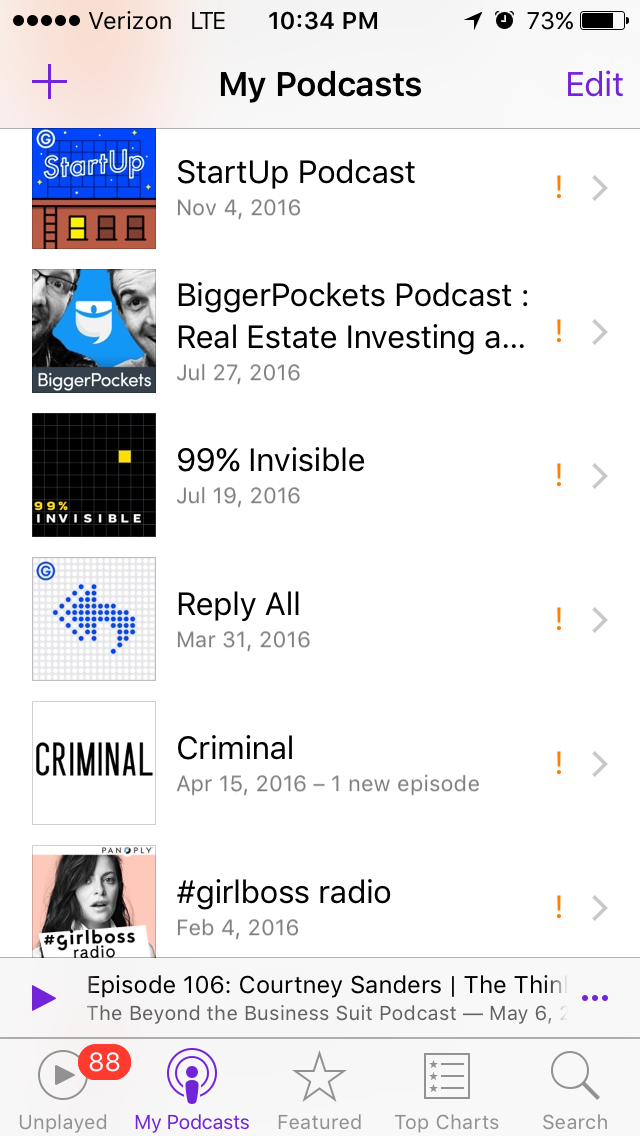
Alternatively, You can browse through podcasts to advertise on using PodBean which is a marketplace that connects advertisers and podcast hosts. Or you can use a podcast agency like Midroll or Panoply that can connect you to the shows within their network. This is the second route I took. This takes some of the legwork out of it in that they communicate with the podcast hosts on your behalf and negotiate rates, however you’re still on your own when it comes to coming up with the podcast creative, listening to the live reads after the show airs, and tracking the effectiveness of the campaign (which can be tricky)
Conclusion
Podcast advertising can be a great way to reach a highly engaged audience.
Want to know exactly what to say in your podcast ad? Download my script for the perfect podcast ad.
Since it’s a relatively new medium, now is your chance to get ahead of the game and differentiate yourself.
I recommend getting involved before the market becomes too saturated and prices become out of reach.
In the relatively short time I’ve been managing podcast ads, the prices have continued to climb for the best performing shows and availability is just beginning to get competitive.
If you’re looking for high quality, high intent traffic, look no further than podcasts.
Want to chat with me about growing your business? Grab some time here.
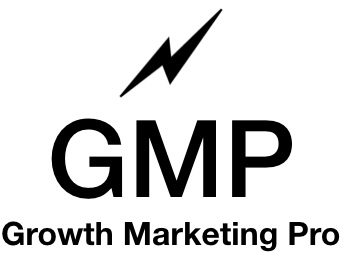
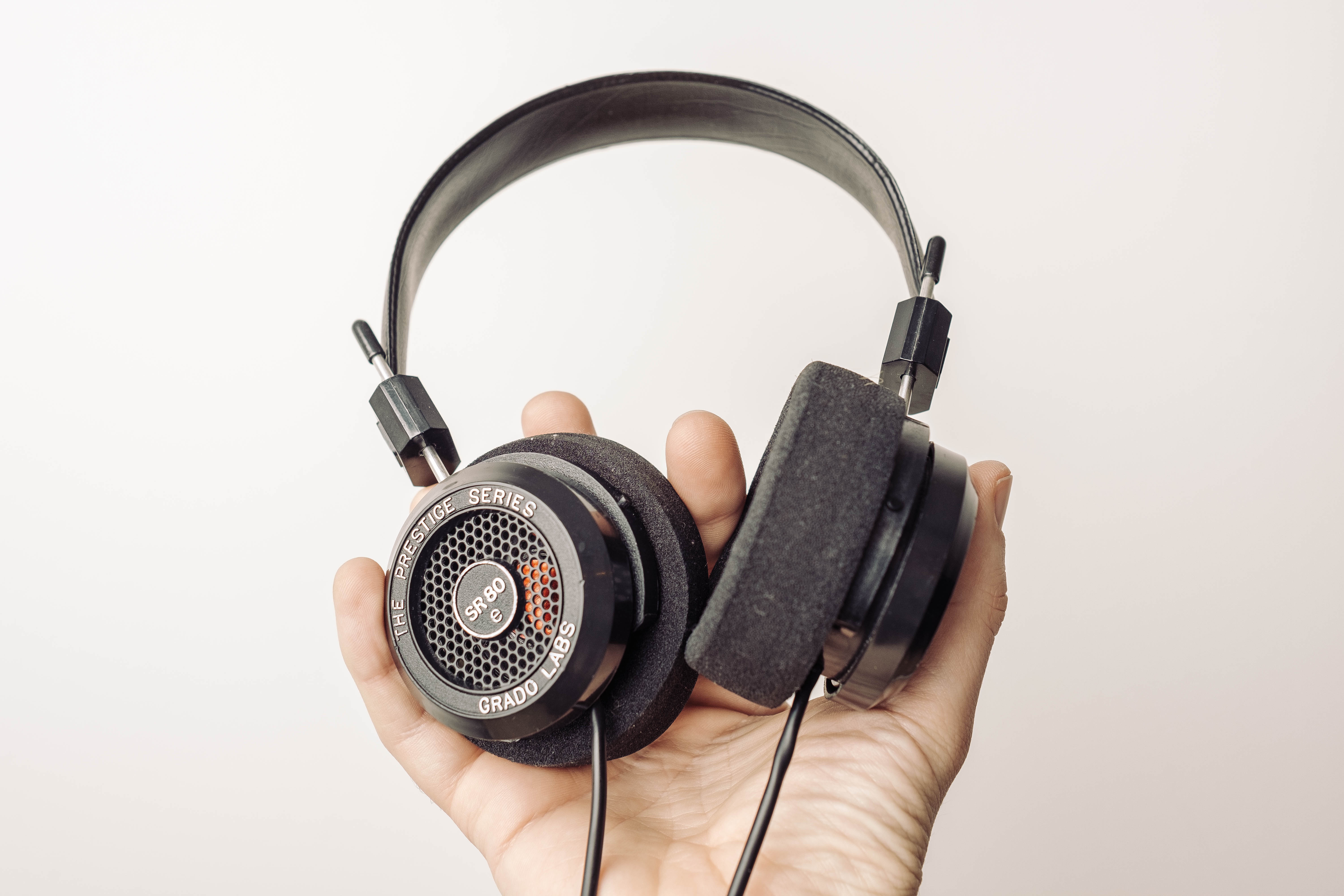
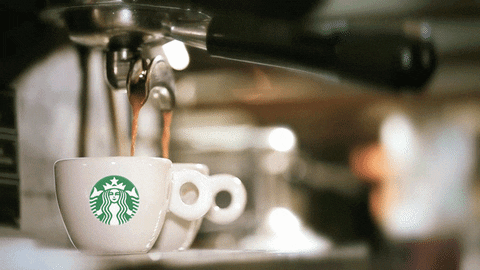
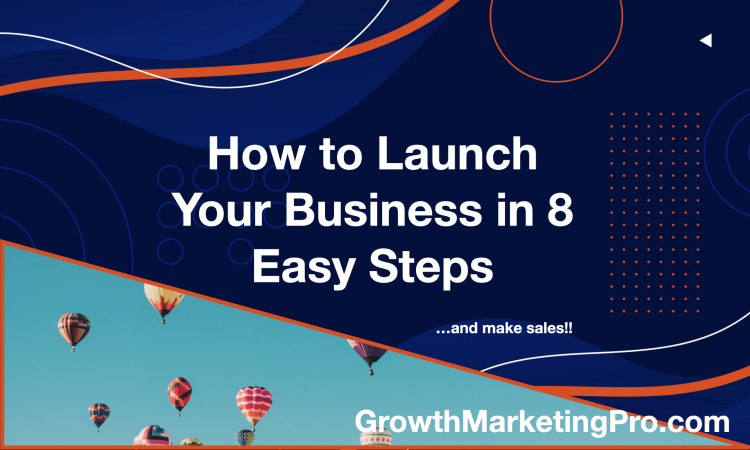

Awesome article. Thx.
What would you say is the minimum podcast size? I am afraid I will not see anything below 50k reach
Hey Vinz- I wouldn’t get too caught up on size of reach if the audience is the right match for your niche. If so, it will likely convert at a higher rate than a bigger show with a broader audience.
Do you think podcasts work for B2B company advertising? Feels like its more of a D2C company niche, but I could be wrong!!
Hey, this guide is really helpful. I found the same really effective. Much thanks for sharing value about podcast advertising 🙂
Thank you Hailey. Yeah, Podcasting is good buts it’s even better to start off on the back of your audiences you’ve created for years. Between, I think Podcasting is more suitable for B2B in that they get the best nuggets for their growth hacks.